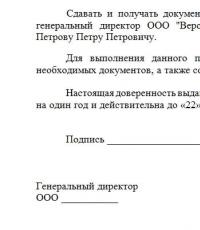Zen tarot osho. Famous fortune telling by Osho
The layout is suitable for clarifying any troubling issue. Most fortune tellers turn to this alignment when they need to decide how to behave in a certain situation. What each card means: 1. Question. 2. Internal influences that you are unable to see. 3. External influences that you are aware of. 4. What is needed for a solution. 5. Solution.
This alignment will allow you to look at how you communicate with other people - with your spouse, colleague, girlfriend, relative or parents. There are four cards involved in the layout, their meaning: 1st - you and what you are putting into communication right now; 2nd - another person and his contribution to the relationship; 3rd - combination of your energies; 4th - general description of the relationship.
This alignment is intended for a couple who would like to resolve misunderstandings that arise, comprehend the essence of their relationship, and give new strength to their relationship. Topics for consideration: 1) Unconscious influence that aggravates the relationship (3 cards), 2) Conscious influence that aggravates the relationship (3 cards) 3) A unifying link that gives life to relationships (3 cards) 4) Blessing.
This layout is used to understand your relationship with another person (lover, friend, relative). It shows each person in his current life, as well as the interplay of energies of these relationships and connections. The left (1, 2, 3) and bottom (7, 8, 9) parts reveal you, the right (4, 5, 6) and top (10, 11, 12) talk about the second person.
A paradox is always a half-truth and this, as Oscar Wilde said, “is the best we can achieve, because absolute truths do not exist.” Concentrate your thoughts within yourself for a few minutes. When performing the layout, the deck is divided into three parts, you choose one of them. The top card from the selected pile represents 1. Here and Now. The bottom card represents 2. Past life influences. Third card - 3. Paradox (unexpected conclusion).
The cards are laid out in the form of a bird in flight. The left wing cards of the bird tell something about our feminine receptive energy in the moment, while the right wing symbolizes our masculine active energy. The first card chosen begins the flight, and therefore belongs to the male wing. Each subsequent card is a response to the previous one, helping the bird to rise higher, and the fortuneteller to bring clarity to the inner world.
The “Key” layout can “open the door” to understanding, shedding light on the hidden, unconscious aspects of each specific issue. What the alignment includes: 1. What is suppressed. 2. Yin card (your feminine, passive part) 3. Yang card (your masculine, active part) 4. Meditation 5. Insight regarding the body 6. Insight regarding the heart 7. Insight regarding being 8. Awareness (understanding).
If you find it difficult to decide which alignment is best to answer your question, use the Celtic Cross - and you will not go wrong. In the Osho Zen Tarot, card positions have a slightly non-standard meaning: 1. Subject 2. That which weakens (strengthens) the question or clarifies (difficulties) understanding the subject 3. Unconscious influence 4. Conscious influence 5. Old model, old path 6. New image actions, movement towards something new 7. You yourself: your feelings and attitude towards the subject 8. That external thing to which you are attracted 9. What you strive for (reject) 10. Outcome (key).
The direction of the alignment is an explanation of the reasons, grounds and possible directions in understanding any condition (crisis, illness or problem) and what I should learn from this, what to pay attention to). Analysis of the layout: 1-2. What did you crucify yourself between 5-6. The newest reason (reason). 7-8. Understanding the true meaning of events. 9. Conclusion.
The reading can be used to deeply understand your relationship with another person, be it a friend, lover or business partner. Thinking about your partner, choose four cards from the deck one at a time. Card 1. Represents you and what you bring to the relationship. Card 2. Represents the person you are interested in and what she brings to your relationship. Card 3. Reflects the dynamics of your relationship. Card 4. Gives the key to realizing their highest potential.
Osho considered the cross to be a symbol of the internal and external dimensions of existence: the horizontal line corresponds to time and events of the external world, and the vertical line signifies growth, development from unconscious habits and assumptions to full awareness. This alignment makes it possible to “simultaneously” read both dimensions and their influence on your life at the present time.
This layout will help you choose between two possibilities and will reveal the hidden potential in each of them. Lay out the three cards of the top row for “alternative 1”, lay out the three cards of the bottom row for “alternative 2”. Having considered the possible consequences of each of the alternatives, read the central card - it will help you “catch” the only correct choice.
The simplest and most famous of the layouts is the “instant layout”, when one card is drawn from the deck for a question or situation. A one-card layout can be used to clarify any issues. Before starting a fortune telling, take some time to think about what you want to clarify.
Osho Zen Tarot cards will help you concentrate on what is happening here and now. The wisdom of Zen philosophy is that everything that happens to us is a direct reflection of our thoughts and feelings, even if we ourselves cannot describe what we feel or follow the course of our thoughts. Thus, the main attention is transferred from the external world to the internal world, we get the opportunity to gain a true understanding of what is happening in our heart. Read the parable, delving into its essence as deeply as possible. Remember the events of the day that may be related to the message of the card.
At any time of the day, select a card and receive a Message from your own deepest Heart center.
This reading can be used to be attuned to your relationship with your friend, lover or business partner. When the questioner is worried about something in a partnership, when he is afraid for his future or feels that his partner does not treat him well enough, this alignment can be used. It will present a general picture of the current relationship between the partners.
This alignment can be useful in understanding past life events and preparing for the journey here and now. Traveling to past incarnations allows us to understand important moments in the planning of our lives and helps us better navigate here in our current physical incarnation.
Through this alignment you can look into the wheel of fate and its consequences. Depending on how we relate to fate, the Wheel of Fate will appear either as a symbol of our dependence and helplessness before it, or as a life lesson that stimulates growth and maturation.
This layout is to understand the spiritual journey of existing life.
We present to your attention a layout that will help, if not solve the problems themselves, then at least find out reliably where these problems lie. Having found out the “place”, you can already use other methods to clarify the specifics. It is known that problems manifest themselves in real life in the absence of harmony in inner life. The system is based on viewing a person’s life at a given time according to seven chakras, i.e. seven aspects of human interaction with the outside world.
This layout could be helpful in discovering the balancing point. Everyone is unique because there is a point of balance.
- this is a specific fortune telling on unusual Osho Zen cards, the interpretation of which is based on the philosophy of Zen Buddhism. This is the main feature and advantage of these cards. The Zen Tarot deck can be used for meditation and self-improvement practices.
Fortune telling is provided with online STATISTICS. All your predictions are remembered.
– this is the financial state of your affairs. The layout describes the cause of complications with income and a way to solve this problem. The result of the efforts made to improve the situation if you follow the advice of Osho Zen tarot cards.
- one of the simplest and most traditional card layouts, this is the answer of the cards to the question that worries you, a type of general layout.
Only three cards are selected: the first determines the past and its influence on the issue that concerns you, the second is the influence of the present on this issue, the third is the final result.
Four cardinal directions - this layout is one of the simplest and most universal layouts. It is suitable even for beginners, but requires precise wording of the question. The more specific the question, the clearer the answer.
The layout shows what significant event awaits the Questioner in the future, what should not be done in this regard, the recommendations of Osho Zen cards and the final result if the recommendation is implemented.
– this layout is used to interpret the current state of affairs and events. It allows you to navigate what is currently happening around you, better see what is happening from all sides, and helps to predict upcoming difficulties.
Having received this information, you can prepare for the problems that await you and cope with them more easily, and in some cases, avoid them altogether.
– this layout can help make an important decision. You are offered two options for solving your problem and the results of each solution. All that remains is to choose which one to accept (or not to accept both – it’s up to you). Prediction does not choose the best option for you, it only shows the results of one or another decision. The choice is yours.
- a layout showing the past incarnation. Sometimes it happens that you are not interested in the past, nor the future, nor the present - you want to know at least something about your previous incarnation. You are interested in what karma you came into this life with, what you need to work off, what you should pay special attention to. In this case, the Infinity layout will help you.
Seven pearls of Isis - the alignment is used in cases where a problem has already arisen or something is greatly bothering you, and you need to carefully analyze this situation. To get as much information as possible on the issue that concerns you, this layout is used.
The layout can be useful if you feel that you are not in control of the situation, or something important is constantly eluding you.
– the alignment can help if you find yourself in a difficult situation that negatively affects your well-being.
The cards offer you a detailed analysis of the situation, its causes, the origins of the problem, opportunities to overcome the crisis, active steps towards overcoming the crisis and the end result of these efforts.
Osho Zen Tarots are not traditional tarots in the sense that you play with predictions. Rather, they are an all-encompassing Zen play that reflects the moment, presenting what is here and now, without judgment or comparison. This game awakens you to sensitivity, intuition, compassion, receptivity. The emphasis on awareness is something that has been added to the old systems and old ideas about tarot. You will see this for yourself as soon as you start working with Osho Zen Tarot cards. Osho Transformation cards are a tool for self-discovery. Each card points the way to renewal and change, and this path is available to all who have managed to truly realize their hidden potential. Each parable contains invaluable insight that encourages a person to seek and grow the truth within himself, feeding it with the power of his own awareness. The word "Tantra" means technique, method, path. The moment you ask the question “how,” the method, the technique, becomes important. Theories become meaningless. Tantra is a science, not a philosophy. Understanding philosophy is easy because it only requires your intellect. You do not have to change, you are not required to transform. In Tantra you will need change. Unless you become different, you cannot understand Tantra, because Tantra is not an intellectual judgment but an experience. Osho Tarot “From Heart to Heart” is an intuitive tool, a game that enriches our inner understanding. With his words, Osho simply points his finger at the Moon, this may provoke or hurt us, but in fact there is purity and power in his words that can awaken us from centuries of sleep and endless dreams. They can light our path and prepare us for the journey within.We have placed his words in a certain order so that you can read them, but always listen to your intuition, you can choose your own order, which is necessary for you, because each person is unique.
53 Meditations to Awaken Your Inner Buddha“The Buddha completely changed our understanding of religion, giving religiosity a new dimension: he posed questions that actually related to reality. He is not a metaphysician, he never asked himself metaphysical questions... He became the very first psychologist that the world knew, because he based his religion not on philosophy, but on psychology, psychology in its true meaning is the science of the soul, the science of internal. Buddha was not interested in who created the world. He asked: “Why am I here?” Who am I? Thanks to whom do I exist?″ The question “Who created me?” does not belong to the past - we are constantly in the process of creation. Our life is not created once and for all, it is not an object. It is something developing, it is a flowing river. And every moment the water in the river develops new territory." Osho
Among online fortune telling using Tarot cards, Osho’s instant layout is highlighted. Zen and Tarot are not as distant concepts as they might seem at first glance. They are united by multi-layered symbolism and a philosophical approach to reading signs, that is, one in which a person receives not a clear guide to action, but clues in the direction of movement. Both Zen and Tarot seek to expand the consciousness of the fortuneteller and push him to find new ways to solve his problems, that is, they are potentially a more universal way to learn the answers to questions and apply them in practice than classical fortune telling.
Components of the layout
Let's define the basic concepts for better reading of instant Tarot layouts: Osho, Zen and Zorba-Buddha. They all come from Asia and are related to each other. Zen (Sanskrit for “contemplation”) is one of the main varieties of Buddhism originally from China, where Zen came from India. If we consider the term broadly, then Zen is the teaching of enlightenment through mystical contemplation.
Osho (Hindi for “dissolved in the ocean”) is an Indian mystic and spiritual leader. He preached a life of total absorption, but without attachment to the world, as well as freedom from ego and the pursuit of enlightenment. Osho received conflicting assessments of his activities during his lifetime and was even expelled from the United States and became persona non grata in 21 countries, but after his death he received new recognition as one of the most important spiritual teachers of India and his generation.
Osho defined Zen as follows:
I call Zen the only living religion because it is not a religion, but religiosity itself. For Zen everything is sacred.
Zen is a state where illness has disappeared; and, of course, along with the disease - and medicine.
And finally, Zorba the Buddha is a characteristic of a person invented by Osho himself. It consists of two key definitions:
- Zorba is a simple man who lives “here and now”, making no distinction between spirit and matter, opposites.
- Buddha is the one who was able to achieve enlightenment. This is a person living his last incarnation, since he was able to undergo all the necessary transformations over the thousands of lives that he has already lived.
So, Zorba the Buddha is a symbiosis of a person free from prejudice, with an open view of the world, and an enlightened person. This is exactly how Osho saw the man of the new generation:

It turns out that the instant Zen Tarot layout should be interpreted impartially, free from stereotypes and fears. The more open the fortuneteller, the more correctly he will understand the answer to his question. And by the way, anyone can ask this type of instant tarot.
One card spread
The easiest and fastest option for fortune telling is instant tarot with one card. For the layout, you need to focus on your question, formulate it as clearly as possible. If possible, you can even close your eyes and imagine an exciting situation, then shuffle the deck and pull out one card. It will answer the question.
Example 1
For the question “Is it worth taking on a new job now?” the “XXI Completeness” card arrived, its meaning: “Everything that distracted you goes away and gives way to something new. Use this break to celebrate one accomplishment and welcome the next.” You should pay attention to the difference in the interpretation of the card in the meaning of the Tarot and according to Osho:


It is difficult to immediately get used to his language and understand how to apply what is said to the subject of fortune telling, that is, to the request. But if you read carefully, you can still find the meaning: according to Osho, the answer to the question “is it worth taking on a new job” is for a person to answer it for himself, so that he can make a decision on his own. Because “only when you reach the extreme point will you see what’s next.” And this peak can be achieved either without working and rolling back, or by working, reaching the next result. In any case, the extreme point that Osho speaks about will be reached, from where the path further will become visible.
He separately says that the master only indicates the direction, and does not give specific answers. This is precisely where freedom manifests itself through the expansion of consciousness. The fortuneteller ceases to be led and gains the opportunity to decide and move independently, that is, he takes responsibility upon himself. At the same time, Osho removes the excess potential that a person may feel with the need to choose for himself. He says that when the world ends, there will be nothing left. That is, the decision that must be made (and whatever it may be) is a component of the illusory world. It is not as important as it may initially seem.
Tarot fortune telling three arcana
Another popular layout is for the present, past and future. There is a Tarot deck on the table in even rows. You need to mentally ask a question, choose any three cards and turn them over. This layout answers the request, with one card explaining the influence of the past on the current situation, the second - the influence of the present, and the third - predicting the final result.
Example 2
To the question “What will the situation be like with the person I love in my life?” the following cards fell: “Movement with the flow” - the past, “Rebel” - the present, “Harmony” - the future. Again, you should pay attention to two different, but complementary, ways of reading the map:

In simple terms, this means that in the past a person went with the flow and thus resolved his issue in relation to the opposite sex. And this should continue to be done. There is no need to worry, because the flow will take you where you need to go. Moreover, there is no need to be “stagnant water”. It’s better to strive for depth, to constantly move.

Translated into understandable language, we can say that both cards speak of a strong person in the present and that you need to remain that way in order to get what you want. Osho’s meaning rather reveals a person’s character, but does not give any recommendations, which is also a classic approach in Zen.

 As a final result, the card promises the achievement of harmony, which has already arisen in the person who made the request. She recommends acting from the heart, being simple and natural.
As a final result, the card promises the achievement of harmony, which has already arisen in the person who made the request. She recommends acting from the heart, being simple and natural.
So, for the Zen Tarot reading, you need to ask not closed questions (the answer is “yes” and “no”), but open ones, as shown in the examples above. For a more accurate answer, you can become like Zorba the Buddha; instant fortune telling will then be even more effective, and the cards with their meanings will be clearer.
Zen Tarot cards can explain the past, present and future, as well as indicate the direction of further movement. To read them correctly you only need a little practice and immersion in Zen philosophy.
0 Fool
Straight position:
The card shows that if you trust your intuition right now, you feel that things are “right,” you cannot be mistaken. Your actions may seem stupid to others or even to yourself if you try to analyze them from a rational point of view. But the “zero place” occupied by the Fool is a place without a number, where the adviser is not skepticism and past experience, but trust and innocence.
Description of the lasso:
Moment to moment, and with every step, the Fool leaves the past behind. He carries a white rose in his hand, which symbolizes his purity, innocence and gullibility. The design of his vest contains the colors of all four elements of the tarot, showing that he is in harmony with the world around him. His intuition had reached its peak. At this moment, he finds support in the universe to take a leap into the unknown. Adventure awaits him on the river of life.
Meaning of the card:
A fool is one who always trusts; a fool is one who continues to trust despite his experience. You deceive him, and he trusts you; you deceive him again, and he trusts you again; you deceive him again, and he trusts you again. Then you will say that he is a fool, that he does not study. His trust is amazing, his trust is so pure that no one can destroy it. Be a fool in the sense of Tao, in the sense of Zen. Don't try to create a wall of knowledge around yourself. Whatever experience comes to you, let it happen and then go on throwing it away. Keep constantly clearing your mind, keep dying to the past so that you remain in the present, here-now, as if you were just born, as if you were a baby. In the beginning it is very difficult. People will start deceiving you...let them. They are unhappy. Even if you are fooled, deceived and robbed, let it happen, because no one can steal from you what is truly yours, no one can take away from you what is truly yours. And every time you do not allow the situation to overwhelm you, that opportunity will become an internal integration. Your soul will become more crystallized.
(Osho)
© Original meanings of the cards included with the deck.
Rider White values:
ASTROLOGICAL SIGNIFICANCE: Uranus/Mercury in the sense of openness of character, curiosity, spontaneity and a bit of crazy; in interaction with Neptune - a feeling of guidance from above.
JOKE.
The jester is our inner child. It means the spontaneous start of something new, impartiality, openness. This is a carefree game, the most elementary joy of life, a period when we enter the unknown with cheerful surprise and without any specific expectations. However, it can also mean infantilism with all its attributes - frivolity, naivety, gambling, and simply stupidity. Or - wise simplicity, modesty of requests and humility, which we usually come to only at the end of a long and difficult path. A jester can also be a cunning, mischievous person. One way or another, he lives only in the present, he is a frank, sincere, mobile person. Is it good or bad? What this card means: our stubborn reluctance to become an adult or, on the contrary, the simplicity acquired along with long experience - will have to be judged by the whole scenario as a whole. The jester always warns about something completely new that is ready to burst into our lives, which causes chaos in it, and we ourselves may get a couple of bumps, but there is actually nothing dangerous about it.
From the book: Hayo Banzhaf. TAROT SELF-TUTORIAL.
Translation from German by E. Kolesov.
Publisher: Center for Astrological Research, 1999
0 - Fool
Uranus
The zero card FOOL (another name is Jester) is likened to the material Universe. But she, like the mortal human body, is nothing more than a robe, a motley suit, suitable for a jester, under whose clothing, however, there is a divine substance, for which buffoonery is just a shadow. Tarot cards were given by enlightened priests to be kept by stupid ignorant people, who made them playing cards, in many ways even an instrument of vice. Man's diabolical habits, therefore, became the unconscious guardian of his philosophical precepts.
If the FOOL is placed in the first place in the deck, and the other cards are laid out in a row from left to right, then you can find that the FOOL goes to other characters, as if passing through all the cards. He, like a neophyte spiritually blind because of a blindfold, is ready to embark on the most difficult journey leading through the gates of Divine Wisdom.
Uranus - embodies the principle of primordial movement. In the TAROT, this principle is compared with the concept of “living nature” and the picture of the Jester, symbolizing divine power before manifestation. This is a divine genius, capable of creating the Universe and destroying it, but... The Universe does not yet exist, and therefore the FOOL is only zero, nothing, absolute emptiness, which can become anything, and the absolute freedom of this becoming: in this there is nothing, in potential contains everything.
The planet Uranus says that God creates the Universe easily, accidentally and not on purpose - and such is the spontaneous Nature of human genius. Most often, the Jester is depicted holding a bundle on a stick over his shoulders and balancing with it (the bundle) on the edge of an abyss. In this bundle there is that “everything” and “nothing” that forced the Jester to set off on his journey.
In a narrowly practical projection on human life, this card is interpreted as a warning against dangers and everything unexpected, fundamentally new and unknown. But behind this unknown there is a broader meaning of higher creativity - creation from scratch, from the fullness of one’s being.
And even though creation is a violation of the original order of being - and therefore there is an abyss before the Fool - but still it is dictated by the highest moral laws and therefore simply cannot be a creation if it does not carry the original principle.
In the upright position, the position of the Jester card can mean the beginning of a new life cycle, any new business. There is energy, optimism, strength and happiness. The map shows unexpected, unplanned circumstances that can turn the current state of affairs upside down. It also indicates the need to make important decisions: - you are free to choose any direction, go anywhere, do whatever you want.
In an inverted position, the Jester’s position speaks of restless, impulsive activity, rash actions. Symbolizes madness and carelessness, a waste of energy, time and effort. The problem is not being solved. You are very careless about something important. Your choice may turn out to be bad, your decision fatal. Sometimes this card symbolizes a person who is tirelessly looking for a change in environment and activities, starting a lot of things, but not finishing anything. In addition, the card can mean thoughtlessness, whims and caprices, extravagance, lack of discipline, immaturity, irrationality in thoughts and behavior, exaltation, defenselessness, inability to calculate consequences, and in extreme cases, frenzy.
"A symbol of a blind man who has turned himself into the slavery of matter. His knapsack is overflowing with his delusions and senseless actions. A broken obelisk is the death of his deeds. The crocodile (in Papus's cards a crocodile is depicted instead of a dog) is an emblem of inexorable fatality and... inevitable atonement and retribution for what he has done , since nothing in life is done “just like that” - and you have to pay for everything.”
Papus
From the book: Rider White Tarot.
Theory and practice.
Series "Secrets of Predictions".
Publishers: AST, Astrel, 2002




